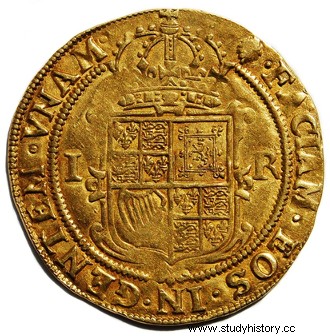
By Me. Cláudio Fernandes
The assembly of the Portuguese Colonial System and Spanish in American lands it took place from the 16th century onwards, mainly through the production and commercialization of sugar and the extraction of precious metals by Portugal and Spain, respectively. In the case of the Portuguese colony, the Brazilian Northeast, especially regions such as the current state of Pernambuco, was the center of sugar economic activity. However, still in the 16th century, Portugal began to count on the participation of Dutch efficiency, especially Dutch Jews, in the sugar trade. This participation involved everything from financing mills to refining the product (sugar) in Dutch territory.
The Portuguese colonial economic machine was in full swing. And, being so, it became necessary to be cautious against the attempts of usurpation that other nations promoted against Portugal, which was typical in the mercantilist system . In the mercantile system, colonies – such as Brazil – were seen as extensions of their metropolises – European countries, such as Portugal, so that they intended to exercise effective and total control over what they produced. This was seen by the metropolises as a “mission” or “civilizing intervention”.
This relationship of integral domination of the colony by the metropolis constituted one of the characteristics of mercantilism that was called Colonial Pact. The Colonial Pact consisted of a set of rules and agreements signed between the metropolis and the settlers, whose objective was to ensure that the exclusivity of the profits of colonial production would be remitted only to their metropolis of origin. This policy became known as the metropolitan exclusive or colonial exclusive.
The Colonial Pact was associated with the accumulation of precious metals and coins (gold and silver) to guarantee the metropolis an appreciation of its economy and state. This became known as metallism . Spain, having found silver more easily, began to dominate the accumulation of metals at the time and to attract investments from other metropolises, such as Portugal and England.

The accumulation of coins was decisive for the consolidation of mercantilism
In addition to these organizing characteristics of the Colonial Pact, the search for the scale favorable trade to the metropolis, which implied the policy of protectionism , which consisted in creating difficulties for the entry of products into the metropolis that came from other kingdoms. This guaranteed a monopoly on the sale of the product that was worked from the exploitation of the colonies.
The Colonial Pact only ended with the advent of another form of economy in modernity, more complex than the mercantile system; that is:the capitalist system that, with the development of industry, from the 18th century onwards, changed the axes of the system of production, distribution and consumption of products. A fact that radically transformed the relationship between the nations of the European continent and their colonies – which became ex-colonies through insurrections, revolts and political wars.
